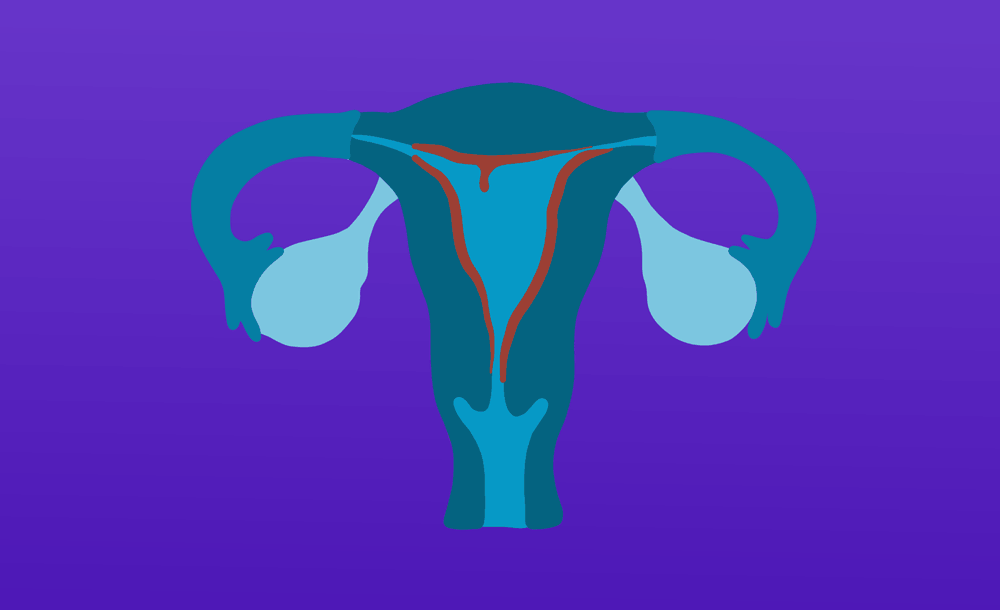Which came first, the bleeding or the egg? Unlike the old adage, we have a firm answer on this one: the bleeding. Medical professionals count the days of the menstrual cycle in a specific order: the first day of bleeding is day one of the cycle. So everything else happens after, including ovulation: the release of an egg from the ovary.
But your menstrual cycle involves a lot more than just the days you’re bleeding.
It’s complex, and a little different for everyone, so menstruators should keep in mind that the dates below are estimates and their mileage may vary. But here’s how it works, in general:
Days 1-7(ish): The Period (menstruation)

The first day of bleeding is Day One of the menstrual cycle. A mixture of blood, vaginal discharge, and cells from the inside of the uterus (the endometrium) come out of the body. The blood and cells leave the uterus through the cervix (the doorway between the uterus and the vagina) and flow out of the body through the vagina. Bleeding typically lasts for 3 to 7 days.
Days 7-14(ish): The Uterine Lining Thickens Again

During this time, the body prepares for ovulation. The brain releases a hormone that tells the ovaries to start maturing eggs in little sacs called follicles. Lots of eggs start maturing even though only one (occasionally two) will eventually be released. The ovaries also produce estrogen during this phase, which tells the lining of the uterus to thicken.
This first phase of the cycle, which is called the follicular phase and includes the period, is where most cycle variation happens. Some people have a very short follicular phase – just seven days from the first day of the period to ovulation – while for others it’s longer (up to 21 days). It can also vary for the same person from cycle to cycle.
Day 14(ish): An Egg Is Released (Aka, Ovulation)

One of the ovarian follicles bursts, releasing its egg into one of two Fallopian tubes, which are attached to either side of the uterus. Sometimes people know they’re ovulating because they have mild to moderate pain with ovulation, called Mittelschmerz. This usually goes away within a few hours but can last for a day or two.
The egg survives in the Fallopian tube for about 24 hours, where it could be fertilized by a sperm. It disintegrates if not fertilized.
Days 15-28: The Luteal Phase

The burst follicle of the ovary, called the corpus luteum, produces the hormone progesterone. Its job is to stabilize the uterine lining so that the lining can hang around in case a fertilized egg implants and begins developing into a fetus. The corpus luteum can’t pump out progesterone forever, though, so if there’s no fetus after 14 days it stops. The sudden withdrawal of progesterone destabilizes the uterine lining and the blood and tissue are shed as a period, bringing us back to the beginning of the cycle.
Folks who are trying to get pregnant or prevent pregnancy may be especially interested in knowing when they’re ovulating, since pregnancy is most likely to happen five days before to one day after ovulation. Just using the calendar on its own isn’t a good way to predict ovulation, though, because everyone’s body is different, and a person’s cycle can vary from month to month. Lots of things can affect the menstrual cycle, too, such as being sick or stressed, changes in body weight, and taking certain medications. Fertility awareness methods – which track cervical mucus, basal body temperature, and other fertility signs – and ovulation tests (from the drug store) and/or reliable birth control are much better ways to go.
If you menstruate, it’s really helpful to know the basics of how your cycle works and what’s normal for you. Knowing the phases of the menstrual cycle, including when ovulation happens, is a great place to start!
